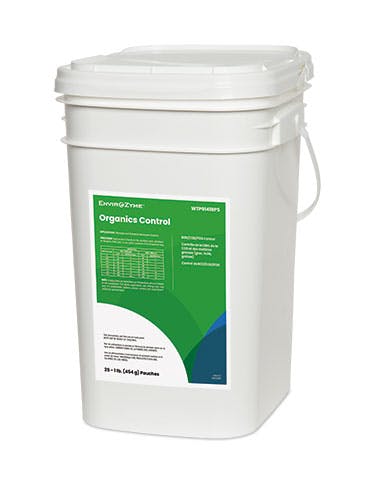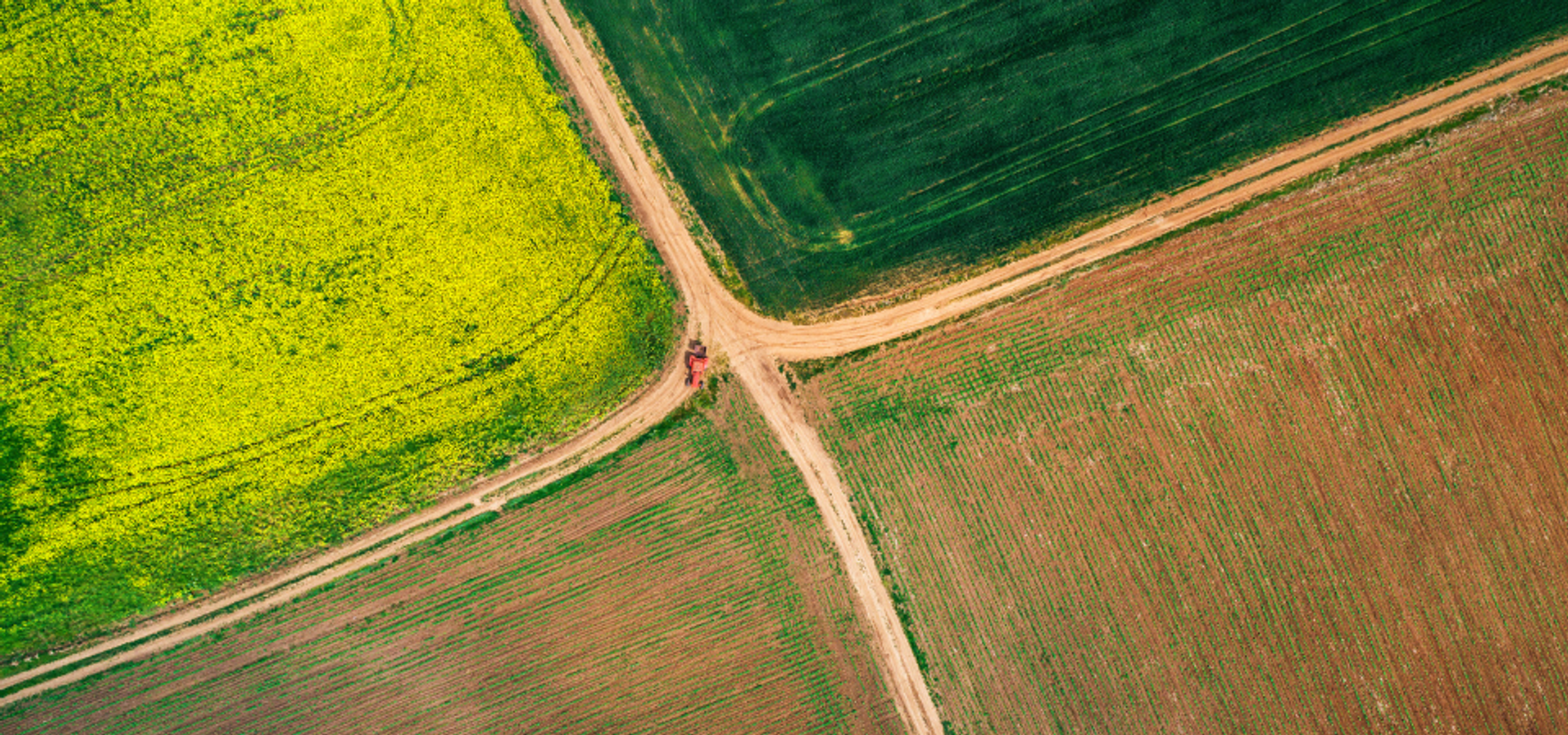
Reduce Sludge without Dredging: Lagoon Remediation Program
A village in the middle of Michigan's agricultural heartland contained 3 wastewater lagoons with elevated volumes of sludge on their floors. They entered into a year-long lagoon remediation program with EnviroZyme to reduce the volume of sludge and defer dredging costs in each of the 3 lagoons using Organics Control.
Discussions with the lagoons’ governing council established the following historical dimensions for each:
• Lagoon 1: 6 acres, 2 feet, 9 inches deep
• Lagoon 2: 6 acres, 3 feet, 3 inches deep
• Lagoon 3: 11 acres, 4 feet, 9 inches deep

On-Site Surveys
In the first on-site survey in late April, before treatment had begun, a small boat and a “sludge judge” were used to measure the depth of the sludge in various sections and series of all 3 lagoons. The results were then plotted to show not only how much sludge was present, but also where the buildup was more severe, a process that forms “sludge maps.”
Based on the depth of sludge in each section and series, we were also able to calculate average sludge depths as follows:
• Lagoon 1: 2.1 feet
• Lagoon 2: 1.33 feet
• Lagoon 3: 1.75 feet
After the first on-site survey was conducted, Organics Control was applied according to rates based on the surface area of each lagoon, and initial daily shock doses were followed by regular weekly doses for the period of about 1 year.
In the second on-site survey, conducted in early May just over a year later, the sludge was measured and mapped once more. The incredible results appear below, with the “before” maps on the left, and the “after” maps on the right. To download a PDF containing all the maps, please click here.
Before Treatment (First On-Site Survey)
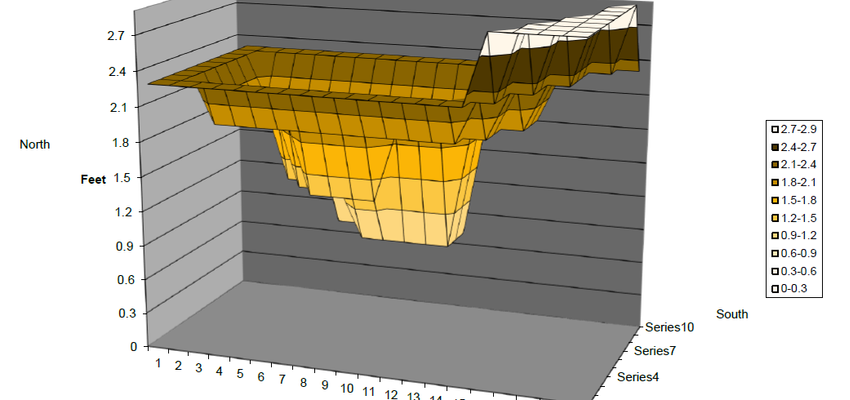
Lagoon 1
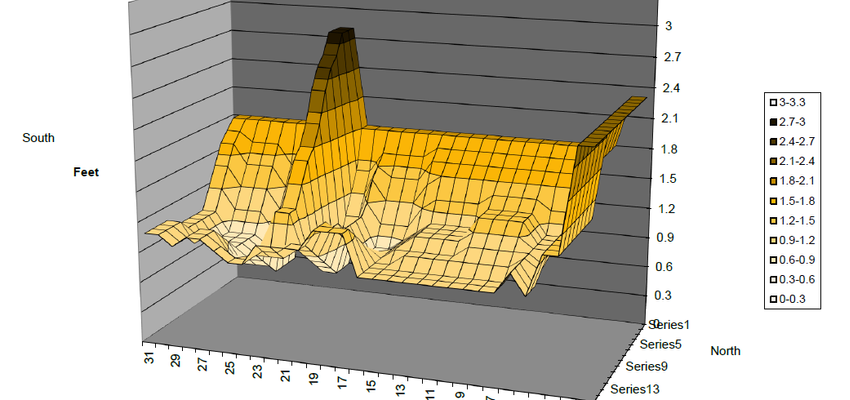
Lagoon 2
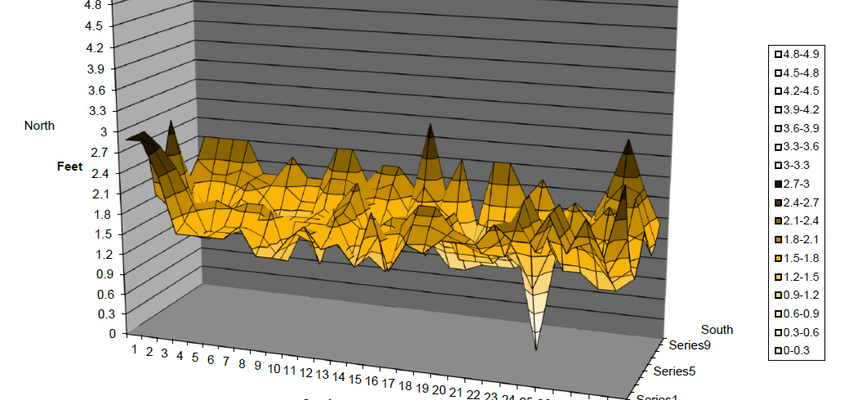
Lagoon 3
After Treatment (Second On-Site Survey)
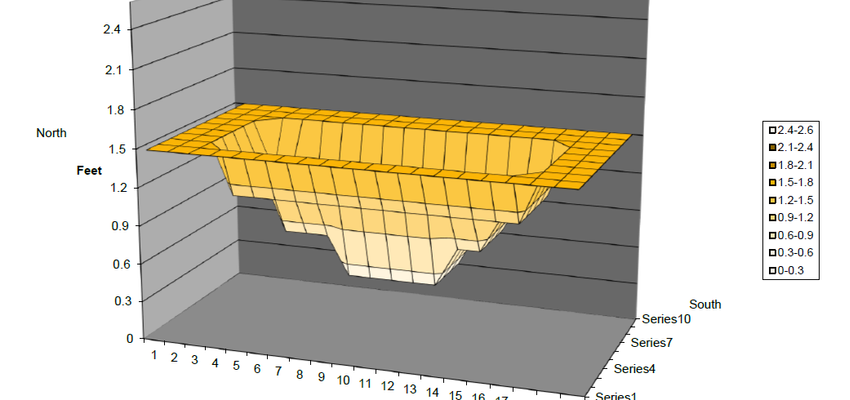
Lagoon 1
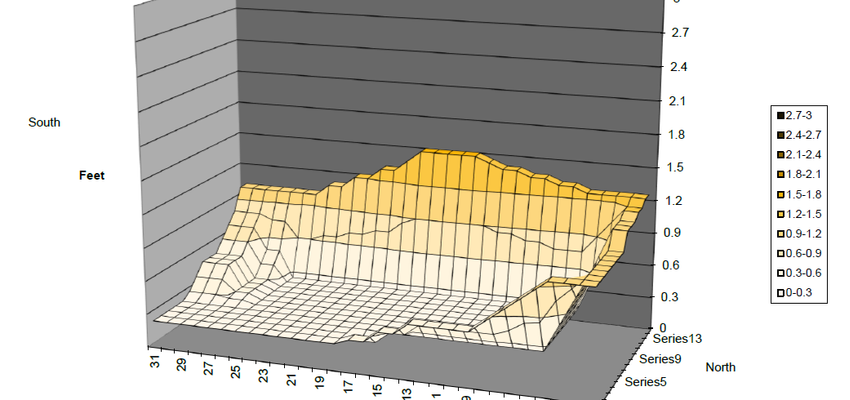
Lagoon 2
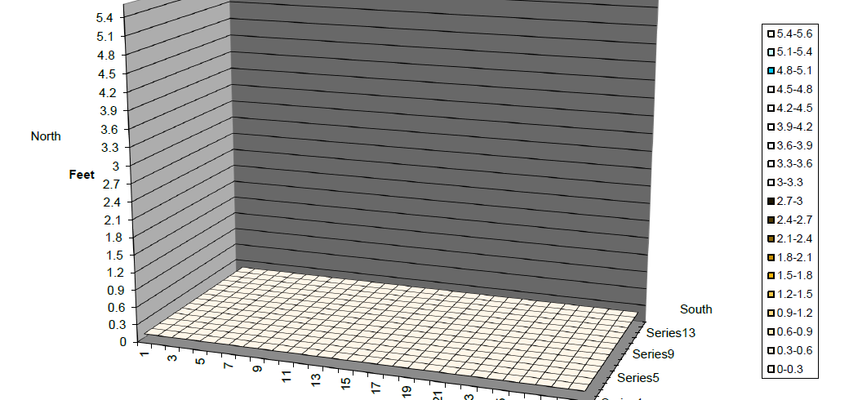
Lagoon 3
Comparison between the maps from each on-site survey suggest that Lagoon 1’s sludge was reduced by a bit less than half, Lagoon 2’s by a bit more than half, and Lagoon 3’s almost entirely eliminated.
Again, average sludge depths were calculated, which enabled us to assign concrete sludge reduction percentages for each lagoon:
• Lagoon 1: 1.27 feet, a 40% reduction
• Lagoon 2: 0.52 feet, a 61% reduction
• Lagoon 3: 0.16 feet, a 91% reduction
The overall appearance of the lagoons in the second on-site survey was also excellent and noticeably cleaner. The side slopes of all the lagoons were sandy at the water level with very little sludge accumulation at the sides. To keep the lagoons in the first-class shape that was achieved through treatment with Organics Control, it was recommended that the municipality continue with maintenance dosing.
The Power of Treatment with EnviroZyme
3 important elements power EnviroZyme’s lagoon remediation program’s exception results: bio-stimulants, micronutrients, and concentrated bacterial cultures. This combination stimulates the growth, reproduction, and metabolism of sludge-digesting bacteria—all for a fraction of the cost of dredging.
Even lagoons without significant sludge buildup can and do benefit from treatment with biological products. Long-term application will help lagoons stay clean, increase bubbles from the bottom sludge, decrease floating scum, and result in visibly cleaner water with slower rates of buildup.
If you are interested in consulting with an expert to reach your quality improvement or cost savings goals for a lagoon or other body of water, please fill out the form below.
